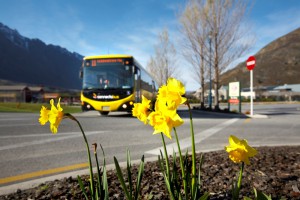Safety and preparation are important considerations for any snow holiday and will help to ensure you have an enjoyable experience. Whether you are visiting for a day or staying on the mountain, here are some general guidelines to ensure you are well prepared.
Planning and preparation
- Ensure you research the detailed safety information for the resort or region you are visiting
- Regularly check the weather, snow and skiing/boarding conditions (conditions can change very quickly in the mountains)
- Determine the best transport option to meet your needs and the expected conditions on the mountain.
- Wear appropriate wind and waterproof clothing and shoes all times
Getting to your snow holiday
Depending the region or resort you are visiting, there are usually a range of transport options to choose from.
- Bus – most major ski destinations and resorts offer bus services from the nearest capital city, airport or local regional towns
- Tour Group –private and group tour operators provide an easy and safe way to enjoy a snow holiday
- Chauffeured Car –private transport companies operate at most destinations providing chauffeured car services
- Self-drive – most resorts have adequate parking and are accessible by private car, however driving in snow conditions is an acquired skill and extreme care is required
If you are planning to self- drive, great care should be taken when driving on alpine roads in winter. Even where snow has been cleared from the road, the surface may still be covered by a film of snow or ice, making driving conditions extremely hazardous.
 Here are some useful safety tips:
Here are some useful safety tips:
- Always drive cautiously, particularly in the snow
- Observe all safety information and local speed limits in resorts
- Apply gradual pressure on the accelerator to avoid wheel spin
- Avoid unnecessary gear changes
- Brake gently and avoid braking when cornering
- Keep well away from other vehicles
- Always carry and fit snow chains as required
It is compulsory to carry chains for your vehicle when travelling to many snow destinations during winter. Chains can be purchased or hired at most ski shops or petrol stations.
What to take / wear
Water resistant outerwear and snow boots are highly recommended for keeping dry on the slopes and when touring around the resort or village. These items can be hired on the mountain or in the major nearby towns.
Here is a useful clothing checklist:
 Sturdy shoes or boots that are waterproof with good tread
Sturdy shoes or boots that are waterproof with good tread- Base layers like thermal underwear that clings close to the body
- Warm long socks and beanies
- A warm top such as a woollen fleece
- Sunglasses or goggles (for skiing and snowboarding)
- Sunscreen and lip balm
- Day backpack
- Water resistant trousers, jacket and gloves (never wear jeans)
- Helmet for skiing and snowboarding (mandatory for children)
Ski and Snowboard Safety
Whether you are an experienced skier or you are planning to try skiing or snowboarding for the first time, here are some important safety tips:
 Enrol in a skiing or snowboarding lesson
Enrol in a skiing or snowboarding lesson- Never ski/board alone and always let someone know your plans
- Take your mobile phone and emergency contact numbers
- Ski or ride within your capabilities and always stay in control
- Always stay within the marked ski trails and runs
- Never ski, board or walk over frozen lakes, dams or creeks
- If lost, stop, seek shelter and wait for help.
- Do not remove your skis/board when conditions are icy or on steep slopes.
For more information please contact GAO Snow, the resort / region you are visiting or visit one of the following websites –
